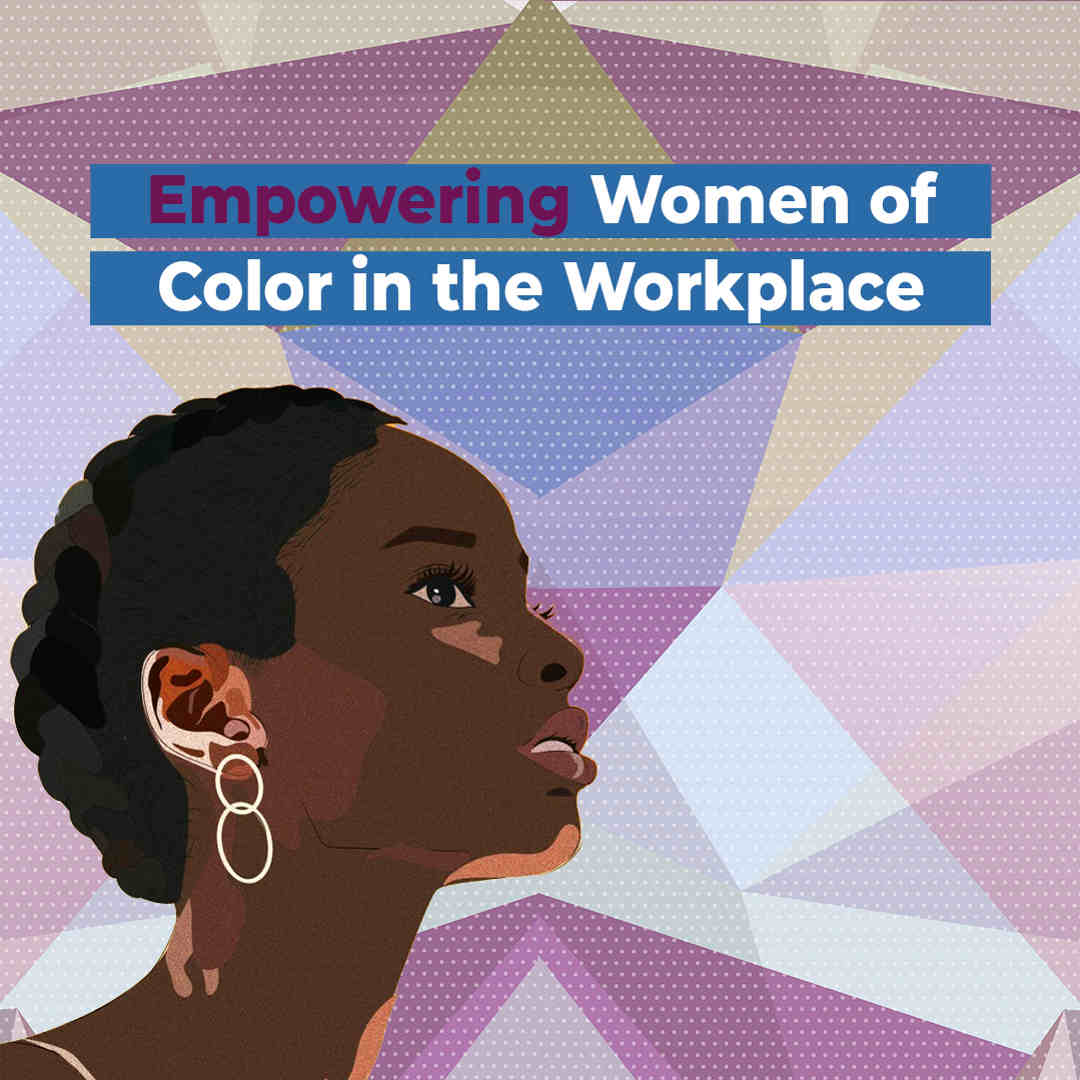CATEGORIES
#Women Empowerment #Work Culture #Young LeadersOverview:
- Companies claim that they are inclusive but only a few actually achieve it.
- Women of color are still facing numerous challenges in the workplace.
- Companies can implement strategies to empower women of color within the workplace and help them advance in their careers.
Women of Color Reshaping the Workplace
Women of color in the workplace is a silent revolution. Their presence in the working environment challenges long-held biases. They reshape their workplaces to be more diverse and inclusive. Companies are now working and recognizing both the moral and business benefits of empowering all identities.
Still, true equality remains a lofty goal for most organizations. A Deloitte survey revealed that although 71% of businesses prioritize inclusion, only 12% succeed in achieving it. This gap between aspiration and action speaks to entrenched norms dying hard.

What is Women of Color in the Workplace?
Women of color at work are not just about defining who they are. The term “women of color in the workplace” means we are creating a workplace that is inclusive and diverse. Their work spaces provide opportunities to reach their career aspirations. Whether they are white, black, or anywhere in between, they are valued and cared for.
Having women of color in the workplace showcases real diversity in action. They are actively breaking down barriers and challenging stereotypes in the workplace.
Challenges Faced by Women of Color in the Workplace
Unfortunately, they continue to face struggles for genuine representation and recognition in the work.

Intersectionality
Intersectionality refers to how the combinations of identities, like gender and race, influence society’s perception of individuals and their experiences. For example, a woman who is both black and female encounters barriers to career advancement. They face the compounded effects of gender and racial biases, making their path to leadership filled with obstacles. These challenges emphasize the importance of empowering women in the workplace and creating policies that address such intersectional struggles.
Stereotypes and Biases
Negative stereotypes and biases directed towards them are massive obstacles that prevent them from progressing in corporate spaces. Inevitable, unconscious biases in recruitment mostly works in favor for men and white individuals compared to people of color. The data from the 2022 Women in the Workplace report of McKinsey & Company, only 1 out of 20 C-suite leadership positions is a woman of color.
Wage Gap and Economic Disparities
Women of color face additional obstacles in the workplace due to the wide-spread wage gap and economic disparity. A 2019 study conducted by Institute for Women Policy Research revealed that they usually earn much less than white women. For every dollar earned by a white male, a black woman earns 61 cents and a Hispanic woman earns 53 cents.
Despite having similar skills and certifications, they are consistently placed at the bottom of the pay scale. This damages their financial security and perpetuates the inequalities within organizational structures.
Microaggressions and Discrimination
Women of color face ongoing challenges in the form of microaggressions and overt discrimination. Studies show that they are vulnerable to experiencing these negative behaviors compared to their white counterparts. As a result, their job satisfaction tends to be lower and turnover rates are higher. Whether it’s subtle slights or blatant acts of prejudice, these constant affronts impact their confidence and impede their professional growth.
Benefits of Women of Color in the Workplace
Despite the obstacles they are facing, they offer something on the table. These are some of the reasons why workplaces must hire women of color:

Diverse Perspectives
Women of color bring diverse perspectives to the workplace and enriches the decision-making processes and problem-solving strategies. Their unique life experiences offer fresh insights and alternative viewpoints that challenge conventional norms and build creativity. By embracing diverse perspectives, organizations can cultivate inclusive cultures where innovation thrives and complex challenges are approached from multiple angles.
Increased Creativity and Innovation
Having a diverse workforce can boost creativity and innovation in the workplace. Studies show that teams with diverse people excel in generating fresh ideas and solutions. They are also agile when it comes to navigating shifts in the market.
Improved Cultural Competence
Women of color contribute to creating inclusive workplaces by sharing their diverse perspectives and cultural knowledge. Their unique experiences help organizations connect with various groups and navigate international business with cultural awareness.
Broader Talent Pool
Hiring women of color broadens the pool of talented individuals. It’s like discovering new sources of knowledge and ability. By actively seeking and keeping them, companies can benefit from a range of skills, experiences, and viewpoints.
Corporate Social Responsibility
Hiring women from diverse backgrounds promotes corporate social responsibility. It also shows their dedication to diversity, fairness, and inclusion. This helps create a more supportive and inclusive work environment. Moreover, they contribute to societal progress and uphold ethical standards of equality and fairness.
Strategies for Empowering Women of Color in the Workplace
Employing women of color is just the beginning to provide opportunities for their representation and professional advancement. However, hiring alone is not sufficient. Here are a few strategies that businesses should implement to support and empower them in the work environment.

Implementing Diversity and Inclusion Initiatives
To achieve genuine inclusion and diversity for women of color, companies should implement policies, practices, and programs that empower them.
Examples of these initiatives include:
- Training on Inclusion and diversity
- Employee resource group (ERGs)
- Fair recruitment and hiring practices
- Implementation of policies against discrimination and harassment
- Mentorship and sponsorship programs
Safe Spaces for Dialogue and Support
Safe spaces provide a platform for sharing experiences without fear of judgment. In these places, they can openly discuss their concerns, opinions, and seek advice without fear of judgment. Building an environment of trust and respect makes them feel valued and heard.
Providing Leadership Development Opportunities
Empowering women of color with leadership opportunities can strengthen any organization’s leadership team. This can involve:
- Offering leadership programs, workshops, and training
- Equipping them with skills, knowledge, and confidence
- Preparing them to assume leadership positions
Advocating for Equal Pay and Promotion Opportunities
Companies need to evaluate and fix pay disparities for women of color to promote gender and racial equality in the workplace. Fair wages and chances for promotion help them have the same career and financial opportunities as others. Improved financial literacy initiatives within organizations can complement these efforts, equipping women of color with the knowledge to make informed decisions about their earnings.

Addressing Unconscious Bias
Organizations must educate employees about the pervasive nature of unconscious bias and its impact on decision-making processes. There are ways to tackle unconscious bias including taking the Implicit Association Test (IAT). This helps make an informed decision, monitor your and your team’s behavior, and more.
Conclusion:
Empowering women of color in the workplace should be driven by the need to follow corporate social responsibility. It is more than a strategy to improve your organizational performance but a moral obligation. Embracing diversity, equity, and inclusion builds an environment where they can thrive and contribute their talents.
FAQs:
What are Some Common Challenges Faced by Women of Color in the Workplace?
Women of color encounter various obstacles, including intersectionality, stereotypes, prejudices, pay disparities, discrimination, and microaggressions.
How Do Firms Track Their Success Toward Encouraging Workplace Diversity, Equity and Inclusion?
Companies may utilize key measures such as participation of women of color in leadership roles, pay equity, employee happiness, and retention rates.
How Do Diversity and Inclusion Affect Company Success?
Diverse teams and inclusive workplaces lead to stronger employee engagement, better financial performance, increased customer happiness, and a good reputation.


